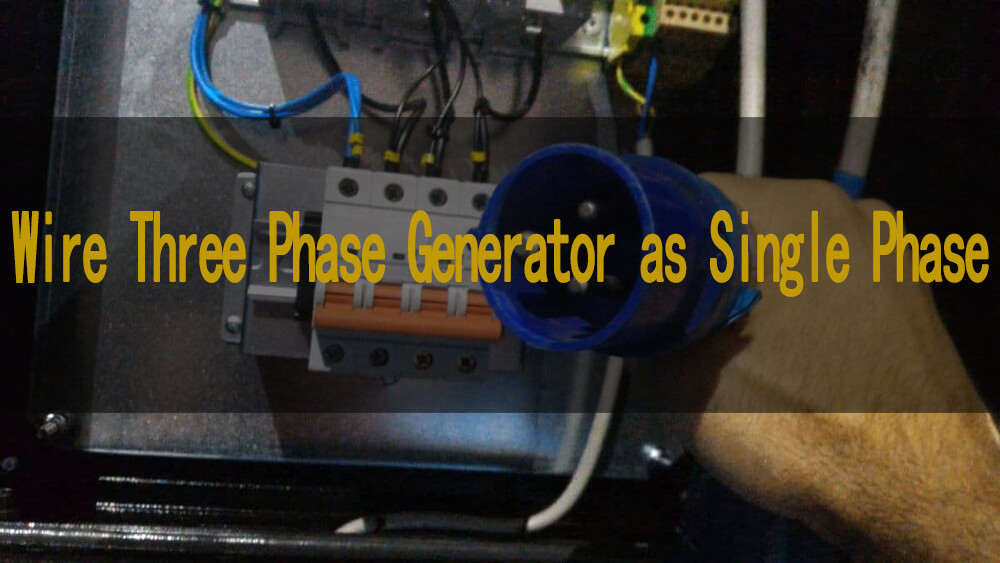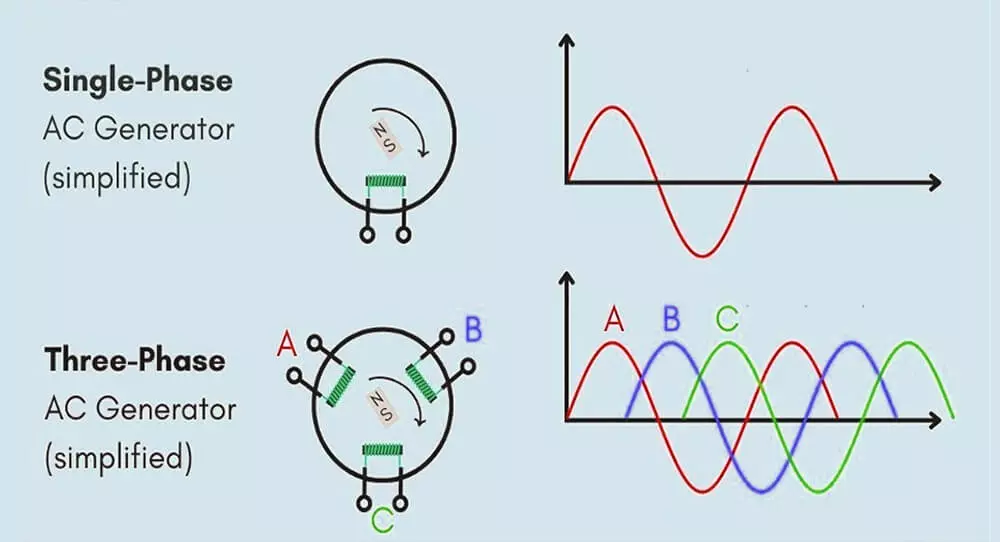12Jul 2023
table of contents
As one of the leading manufacturers in the generator industry, BISON understands that our customers have different needs. Sometimes these needs include converting a three-phase generator to a single-phase generator. Whether you are a wholesaler looking to diversify your product, an importer catering to different markets, or a procurement officer requesting equipment for a specific project, it is beneficial to understand this transition process.

Wiring Three-Phase to Single-Phase Power
Requirements While the frequency of the generator supply is guaranteed to be coordinated with the frequency of the lattice or device, the following conditions shall also be met:
The typical output voltage of the generator power supply must match the working phase voltage of the structure or equipment powered by the generator.
There should be no step difference between matrix voltage and generator voltage.
Furthermore, to understand the conversion of a three-phase generator to a single-phase generator, it is necessary to first study the internal design of both types of generators.
In BISON single-phase generator, the individual windings of the stator form a transverse circuit that produces the output voltage.
First, the voltages on all stator windings of the same stage are equal to each other
Take a 4-pole generator as an example. The four axes of the rotor are evenly distributed around the stator housing. At any moment, the position of each rotor shaft relative to the stator winding mirrors the position of the other rotor shafts. Therefore, the voltages developed in all stator windings are of similar value and magnitude.
Second, the series combination of stator windings
Furthermore, because the windings are related in arrangement, the voltage produced at each twist represents the delivery of the final generator power output voltage, which is four times the voltage across each individual stator winding.
Single-phase transmission is usually used in residential areas, but is also suitable for rural areas where loads are small and uncommon and the cost of building a three-phase distribution network is high.
In BISON three-phase generator, the three windings are placed to create a 120° phase difference in the induced voltage across each stator winding. These three stages operate independently and have no impact on one another.
Star or Y configuration
In a star connection, one lead from each winding forms the neutral. The opposite ends (called endpoints) of each winding are connected to the line terminals. This produces a line voltage that is greater than the individual voltages on each winding.
Triangle configuration
In a delta setup, the start of one phase is connected to the end of an adjacent phase, resulting in equal phase-to-phase voltages. Power companies and commercial generators produce three-phase electricity.
three phase generator
Change the connection of the stator windings to convert a three-phase generator into a single-phase generator. For example, for a 3 phase generator you will have 6 leads. Larger generators typically have 12 leads for the 6 coils, with all wires coming from the generator, making it easier to configure the generator in multiple ways. Connecting the coils in series turns the generator into a single-phase generator.
Connecting opposite coils in series doubles the output voltage.
Parallel connection will double the current.
Reconfiguring the portable generator is tricky due to the need to map the wires to the corresponding coils. Documentation from the generator manufacturer is mandatory. Otherwise, you'll need to research how the generator is currently wired and work backwards from there.
A three-phase generator is essentially a combination of three single-phase units. You can connect single phase loads to it in a number of ways.
For low power loads, connect the load between the phase conductor and the system neutral.
Connect the load to the two live conductors in the phase-to-phase connection. High power loads such as air conditioners or heaters are usually connected this way, providing 208V. However, devices that require 240V can only run at 75% capacity at 208V, resulting in poorer performance.
You can connect a rotary commutator directly to a single-phase generator to create three-phase power. This setup requires a straightforward configuration with two idler inputs from the generator. A voltage is developed on the third terminal which is not connected to the single phase power supply. The induced voltage is 120° out of phase compared to the voltage on the other two terminals.
They are like rotary stage converters. Considering applications that require less than 20 horsepower, a VFD-single-stage generator combination is the best choice.
After understanding the three-phase and single-phase conversion methods of the above generators, further understanding of what is single-phase power supply and three-phase power supply will help to correctly select single-phase and three-phase generators.

Single-phase electricity transmits power through a phase wire (often called a live wire) and a neutral wire. If desired, a third wire (called a ground) can be added to prevent electrocution.
Typically, household power utilizes single-phase power, meaning one current runs across the entire spectrum, from voltage to frequency. This setup allows appliances to operate more efficiently and reduces their likelihood of failure.
Three-phase electricity refers to the type of electricity that uses three alternating currents to generate a rotating magnetic field. This form of power supply is primarily used for phase motors or any load that needs to rotate. Since the three phases are 120 degrees apart, the rotor will not get stuck. The motor's rotor consists of three sets of coils spaced 120 degrees apart.
BISON generator produces alternating current, so the three sets of coils produce alternating current that is 120 degrees out of phase. Three-phase power supply means that these three groups of currents are connected to different electrical appliances as live wires, and connected to the common neutral wire.
There are many uses of three-phase AC power supply, and most industrial AC power supply equipment adopts three-phase AC power supply (three-phase four-wire power supply). In daily life, mostly single-phase power is used.
The output power of single-phase generators is usually limited to less than 25 kVA. However, where higher ratings are required, higher power obtained with a three-phase generator is less expensive.
Choosing single-phase or three-phase generators, it is crucial to consider the power application. If your appliance only runs on single-phase power, a single-phase generator will be enough. However, if you also need equipment that operates on different phases, select a three-phase generator will be better. BISON single-phase generators are limited to outputting only one phase, while BISON three-phase generators offer single-phase and three-phase electrical output two options. Additionally, it is need to think about load balancing when upgrading from single-phase to three-phase equipment. For more information on three-phase or single-phase generators, please feel free to contact BISON generator exporters.
inquiry form here
BISON BLOG, All the latest news and views from Bison Machinery.
Related Articles
How to Wire Three Phase Generator as Single Phase